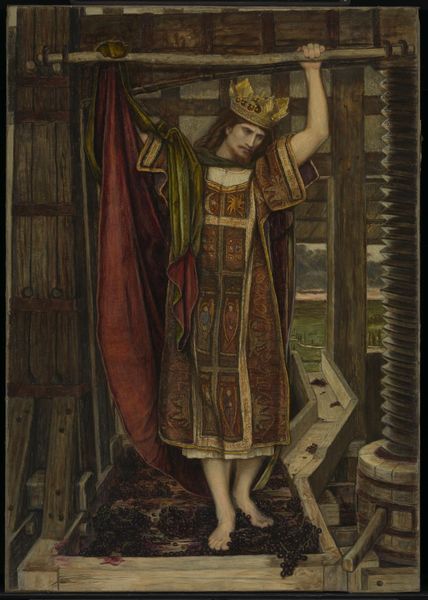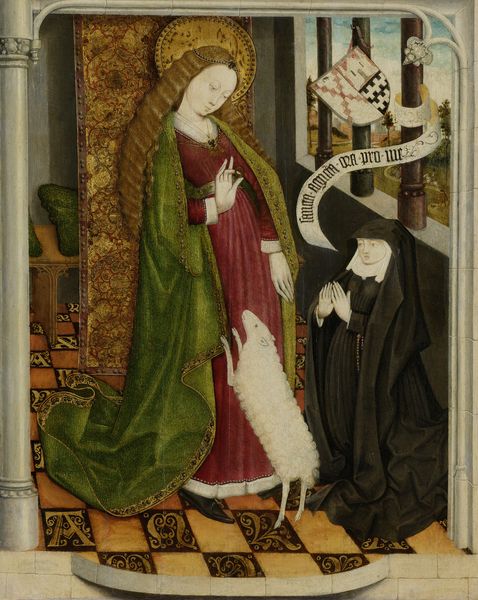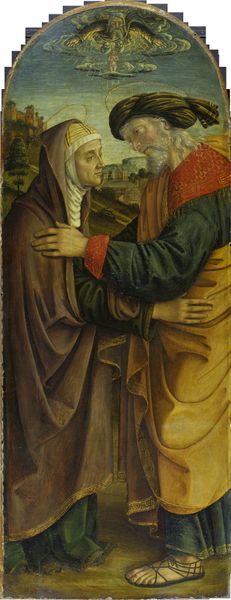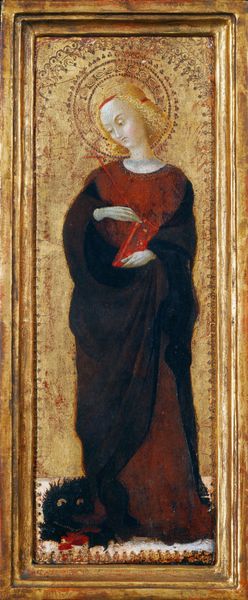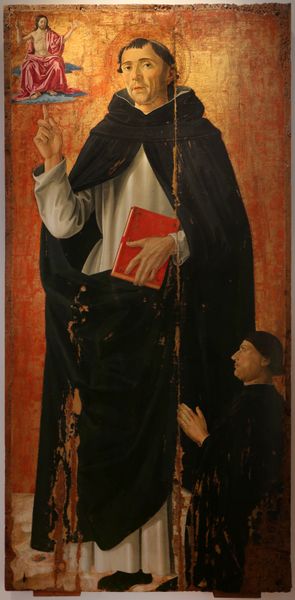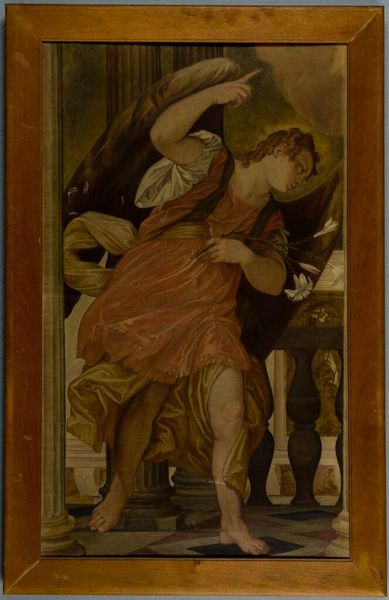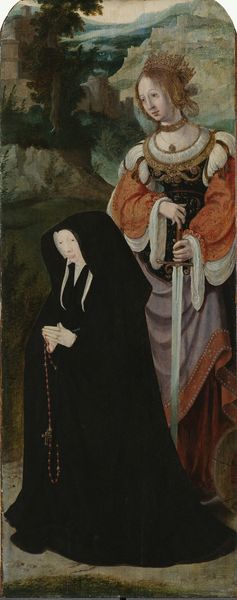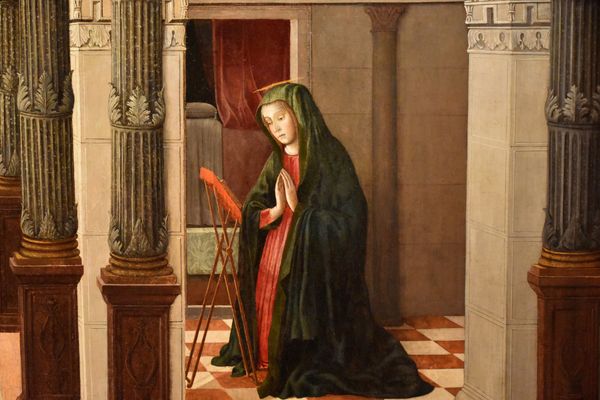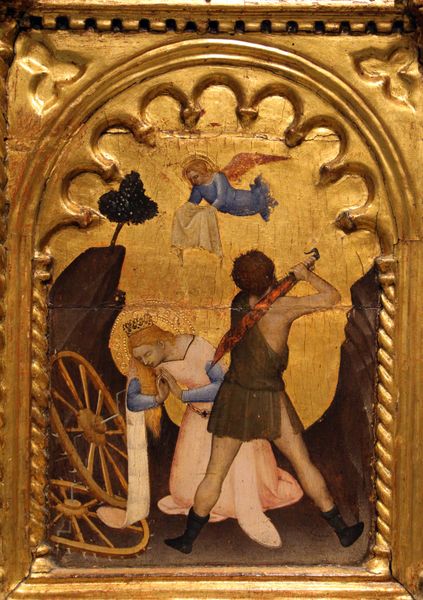
painting, oil-paint
#
portrait
#
narrative-art
#
painting
#
oil-paint
#
figuration
#
oil painting
#
romanticism
#
pre-raphaelites
#
portrait art
Copyright: Public domain
Byam Shaw painted this image of the Lady of Shalott, a figure trapped by a curse, in the late 19th or early 20th century. Notice the fallen leaves scattered around her. These are not merely decorative; they are potent symbols of mortality and the passage of time. Leaves have long been associated with the cyclical nature of life, death, and rebirth, echoed in pagan rituals and myths, symbolizing both the transient beauty of life and its inevitable decay. Think of the Sibyls, the ancient oracles who wrote their prophecies on leaves, a practice that links the divine to the ephemeral. In Shaw’s image, the leaves take on a tragic dimension. The Lady, bound by her curse, is intimately connected to the natural world, her fate intertwined with its rhythms. We witness her final moments, as her defiance of the curse leads to her demise. This emotional intensity is a powerful force, engaging viewers on a deep, subconscious level, reminding us of our own mortality and the universal human longing for freedom. As this image suggests, such symbols reappear, evolve, and are imbued with new meaning throughout time.
Comments
No comments
Be the first to comment and join the conversation on the ultimate creative platform.


